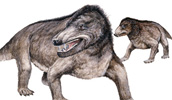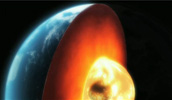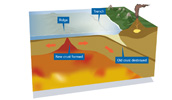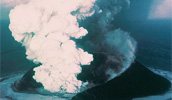Plate tectonics
You need Adobe Flash Player, or an HTML5 enabled web browser, and JavaScript enabled to watch this video.
Visit the Adobe website to download the latest Adobe Flash Player
Find out how the movement of tectonic plates continues to transform our planet, and why earthquakes and volcanoes are common at their boundaries.
Plate tectonics is the theory that Earth’s outer shell, the lithosphere, is broken up into huge irregularly shaped pieces, tectonic plates, that fit together like a jigsaw. The theory underpins our current understanding of volcanoes, earthquakes, mountain formation and deep-sea trenches.
Transforming Earth's surface
Until around 200 million years ago Earth’s continents all formed one huge supercontinent, Pangaea. Over millions of years the movement of plates, by only a few centimetres each year, has caused this supercontinent to separate, forming the continents we have today.
The movement of tectonic plates is caused by heat radiating from within the Earth. There are three types of movement: divergent (plates moving apart), convergent (plates moving together) and transform (plates grinding past each other). These plate interactions explain earthquakes and volcanic eruptions and how mountains and deep sea trenches form.
Toolbox
-

Evidence for plate tectonics
Slideshow: how the theory of plate tectonics developed.
-

Structure of the Earth
Learn about the three main regions of the Earth's interior - the crust, mantle and core.
-

Types of plate boundary
The interaction between plates at plate boundaries can be broadly divided into three categories: divergent, convergent or transform.
-

Case study: Surtsey
In 1963, powerful underwater eruptions led to the birth of a new island off the coast of Iceland, called Surtsey. Watch this film to find out more.